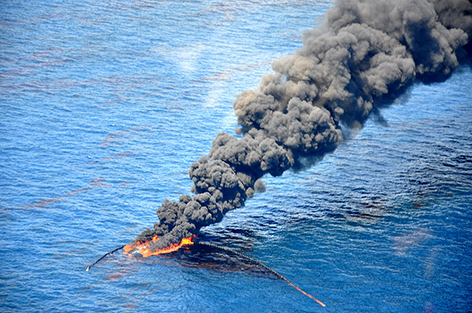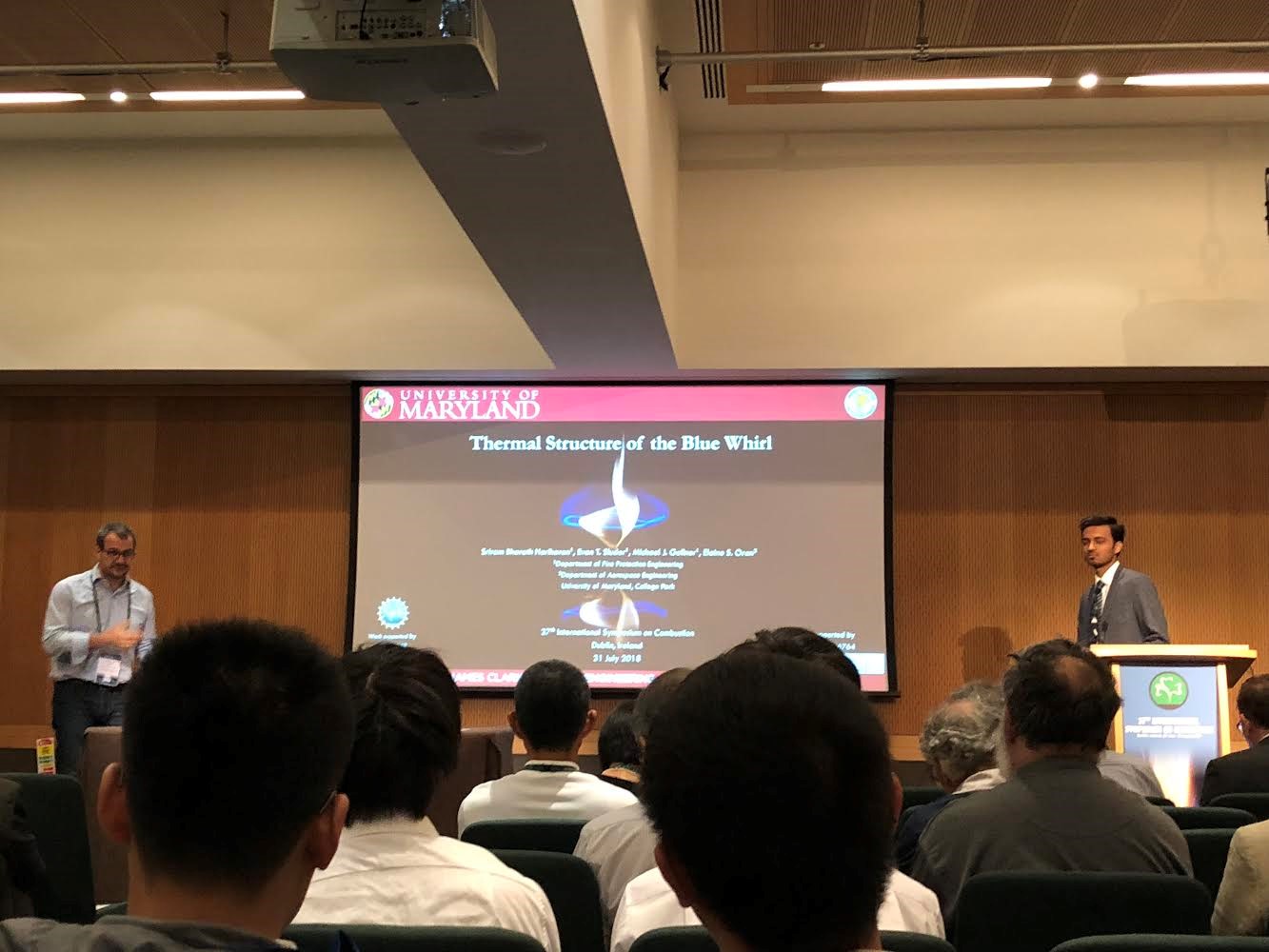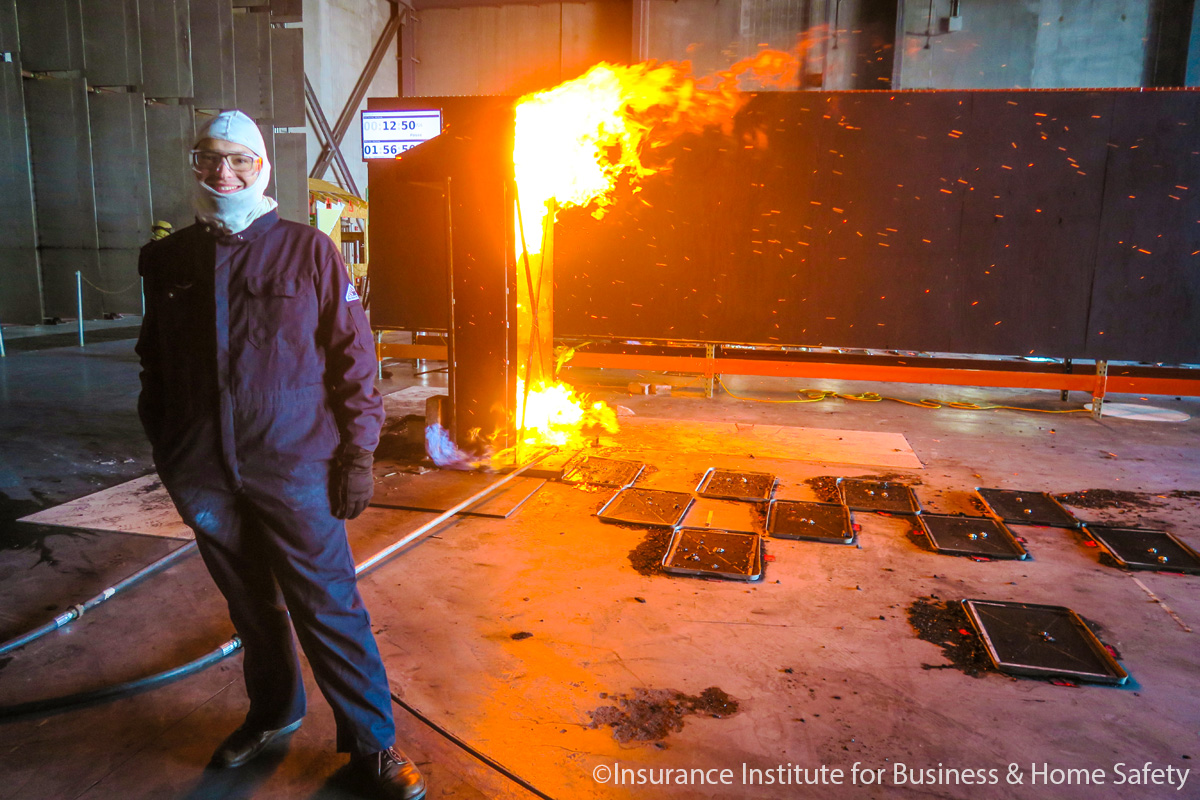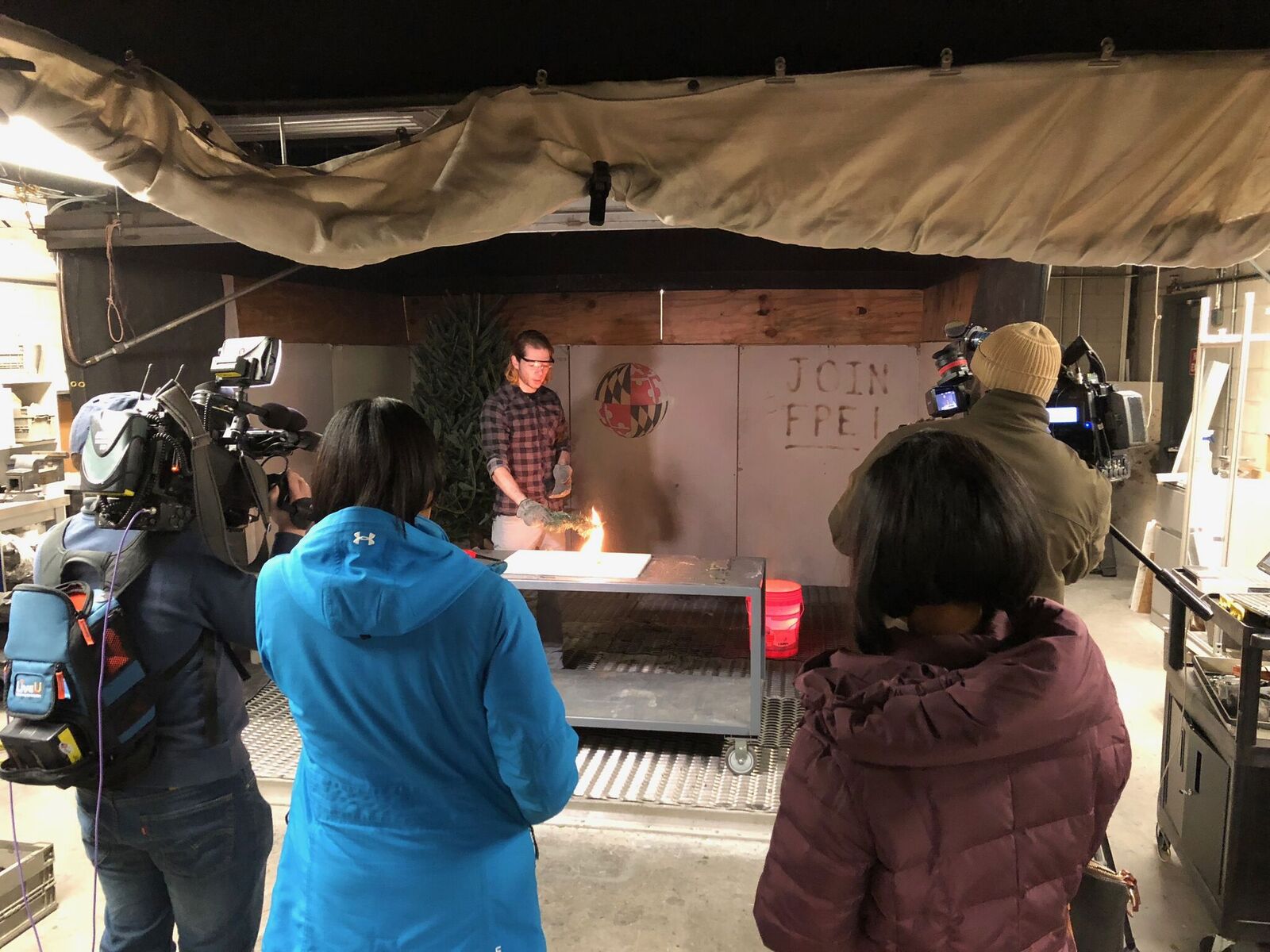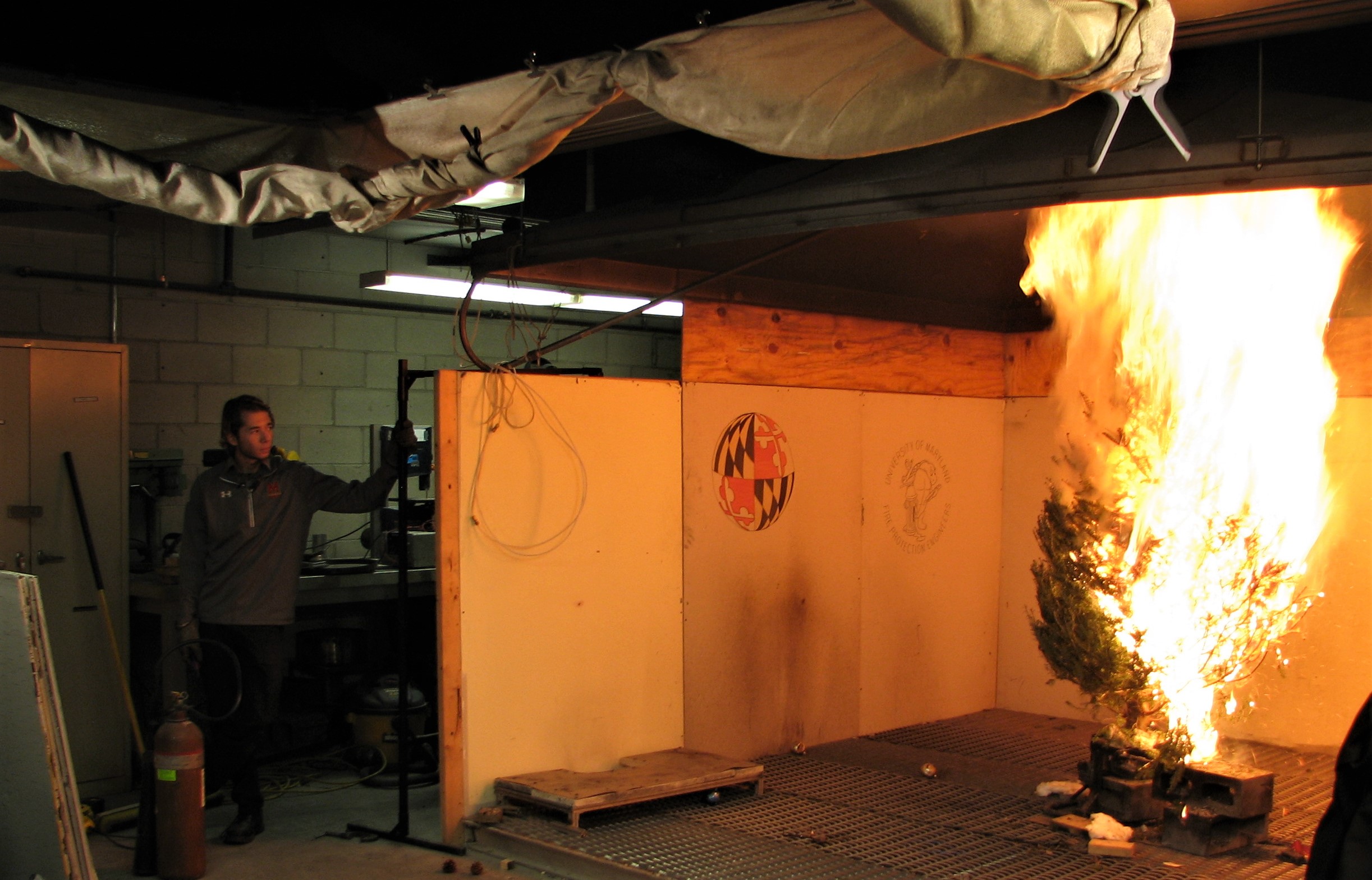News Story
Harnessing the Power of ‘Fire Whirls’ - A Review
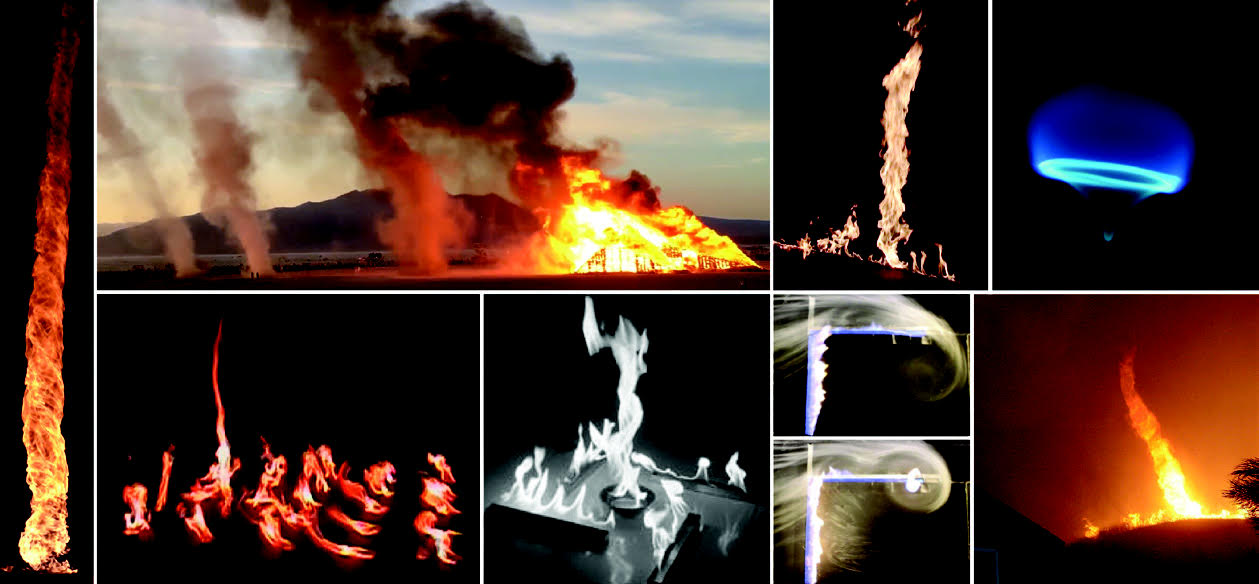
Various forms and scales of fire whirls. (a) Full structure of a 30-cm-diameter pool heptane fire whirl in the laboratory at the University of Maryland. (b) Shedding columns of whirling hot gases in the wake of a fire plume during the Burning Man event. Photo courtesy of Jeff Kravitz. (c) Formation of a fire whirl over a line burner with cross flow (Zhou et al. 2016). (d ) The blue whirl, thought to form due to vortex breakdown (Xiao et al. 2016). (e) Formation of a fire whirl due to the interaction of multiple fire sources with cross flow (Liu et al. 2007). ( f ) Fire whirl formation from multiple fires without wind (Zhou & Wu 2007). ( g) Generation of whirling columns of hot gases over an L-shaped fire source with 1-cm width through a 0.2-m/s cross flow (Kuwana et al. 2013). (h) An inclined fire whirl at the wildland–urban interface during the Freeway Complex fire in Yorba Linda, California, on November 15, 2008. Photo courtesy of David McNew/Getty Images.
Fire whirls – a powerful vortex of swirling flames – have long been a destructive force in extreme urban and wildland fires. Commonly known as a fire tornado, this dramatic structure appears when the right wind and fire conditions merge - both fascinating and terrifying firefighters and researchers alike. Their drastically increased fire size, unpredictable nature, and ability to propel burning embers far into the air present many reasons to study them – despite this fact, these whirling flames are still poorly understood.
To that end, Michael Gollner, Associate Professor in the Department of Fire Protection Engineering (FPE) at the University of Maryland (UMD), was invited by the editorial board of the Annual Review of Fluid Mechanics to review the current literature regarding fire whirls. The publication, co-authored by FPE and Aerospace Engineering (AE) researchers – Ali Tohidi (FPE Post Doc), and Huahua Xiao (AE Research Associate) – covers the development of the field, current understanding and a future direction for research.
Their review begins with an overview of the influential factors that govern fire whirl dynamics, such as wind speed, temperature, circulation effects and fuel type. Generally, fire whirls are formed in the laboratory by walls or fans, however a diverse range of conditions have been observed to form fire whirls in nature, where they can reach over 1,000 feet high, with temperatures over 2,000 degrees Fahrenheit. Common conditions for fire whirl formation include winds over an L-shaped fire, on the protected side of a slope, and downstream of a large fire plume. Regardless of the type of fire whirl, there are three essential criteria for the formation of all whirls: a fire source, a swirling mechanism (such as wind or obstacles), and a friction force at the bottom for boundary layer formation.
A strong circulation – a measure of the rotation of fluid particles (within a closed contour) around their center of mass – is the major factor setting fire whirls apart from non-swirling fires. In a fire whirl, the height of the flames and burning rate of the fire grows dramatically, however there is still significant debate on the mechanisms responsible for these features. Furthermore, the diverse range of conditions responsible for forming fire whirls has not been fully understood.
“While this publication has provided a broad review of the field, necessary for future development,” said Dr. Gollner, “there is still much to be done in terms of understanding how fire whirls form, their inner structure, and the effects the role they play during extreme fires.”
Dr. Tohidi added, “What was most exciting in this review are the numerous opportunities for future research and development. Application of new numerical models will open our eyes to all the fascinating mechanisms occurring within fire whirls, which could be used in the future to harness their intensity for more efficient combustion.”
The ‘blue whirl,’ a recent discovery in the Clark School of Engineering, presents just such an opportunity. Drs. Xiao, Gollner and Elaine Oran (AE Professor) discovered the soot-free phenomenon, which inspired the use of fire whirls to provide a more efficient solution for oil spill remediation and, potentially in the future, clean combustion. Although there is still much to explore about this recent discovery, if this form of combustion could be replicated on a larger scale, it could significantly improve the efficiency of directly burning liquid fuels. Gollner and Oran have recently received funding from the Bureau of Safety and Environmental Enforcement (BSEE) Oil Spill Preparedness Division to continue their study of fire whirls specifically for oil spill remediation.
The final version of this research entitled, “Fire Whirls,” will be published in the Annual Review of Fluid Mechanics on January 5, 2018.
For additional information:
Tohidi, Ali, Michael J. Gollner, and Huahua Xiao. "Fire Whirls." Annual Review of Fluid Mechanics, vol. 15, no. 19, 5 Jan. 2018, pp. 187-213, doi:10.1146/annurev-fluid-122316-045209.
Related Media:
Blue Whirl Continues to Make Headlines – FPE/UMD, January 2017
FPE Professor Michael Gollner Explains Fire Tornados and Wildfire Research – FPE/UMD, April 2014
Published October 17, 2017
